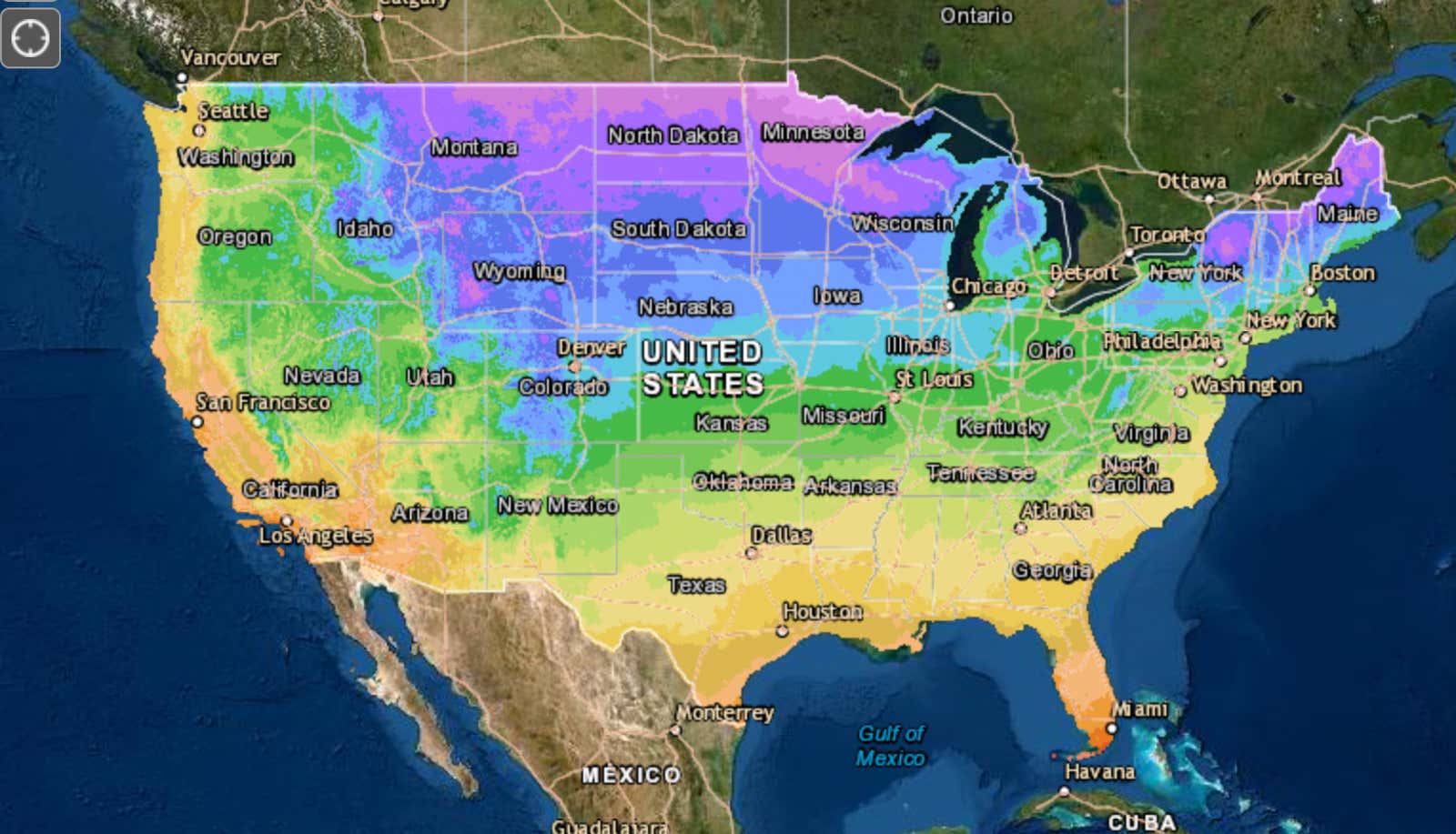Why Knowing Your Area’s Hardiness Zone Can Keep Your Plants Alive

Have you ever looked at a plant tag at your local garden center and wondered if it said something like “Zone 5-9”? This number refers to “hardiness zones” defined by the USDA, which serve as a guideline for determining which plants will best survive in which regions of the country. While there are many factors beyond this number that determine how successful a plant will be, understanding and using hardiness zones is a great first step in planning your garden this spring.
What are plant hardiness zones?
To help gardeners, both amateur and professional, determine which plants will grow best in which parts of the country, the USDA publishes a map that divides the country into zones based on the coldest temperature each zone expects to experience during the winter.
There are 13 larger zones separated by 10°F and then divided into two subzones of 5°F each. For example, my area in Los Angeles is 10b, while nearby Griffith Park is 11a.
To find out which zone you live in, go to the USDA interactive map and either enter your zip code or zoom in on your part of the country.
Once you know which zone you live in, you can compare it to the zone information on the labels of any plants you buy at a garden center or online. If your zone equals or exceeds the zone indicated on the tag, the plant should be strong enough to survive the winter.
Growing perennials versus annuals in hardiness zones
Planting area information is most useful if you plan to grow perennials—plants that are meant to live beyond one planting season. The further away you are from a plant’s optimum temperature zone, the more likely it is that it will not survive the winter.
You can grow plants that are outside of your zone, but they are more likely to be annuals because they will likely need to be repotted after a year. For these plants, the winter temperature is not important – they won’t survive anyway – so you should take more care to plant this plant at the right time.
Exceptions to the rules
The zone information on plant tags assumes the plant will be planted in the ground, but if you’re growing it in a pot, the rules change. Ground soil is slightly warmer and will not freeze as much as soil in a raised pot. For non-terrestrial plants, a good rule of thumb is to choose plants that are two zones “hardier” than your planting zone .
The USDA hardiness map is getting very specific, but it’s still a rough tool for determining the exact climate conditions in your garden. Your yard may be more or less exposed to the elements than the areas around it, depending on geography, which affects which plants will thrive there.
Going even deeper, your garden has a micro-climate that you can use or create that also allows you to “cheat” the zones a bit. An area that is permanently shaded by a tree or wall can be used to grow plants in cooler climates, for example where setting up a sun trap (or using a natural trap) can help the plant survive a cold winter. it should be able to handle.
Outside of zones, native plants will grow best
Temperature is only one of the factors that determine whether a plant will be healthy. Two plants with the same zone rating could develop in areas where other factors (soil composition, moisture, etc.) differ greatly. So every 5.5 plant will not thrive in every 5.5 garden. Ultimately, the most successful plants for your garden are likely to be the plants that grow in your area (especially weeds). Native plants have evolved to live exactly where your backyard comes naturally, so if you want the best chance of a thriving garden, stay put.